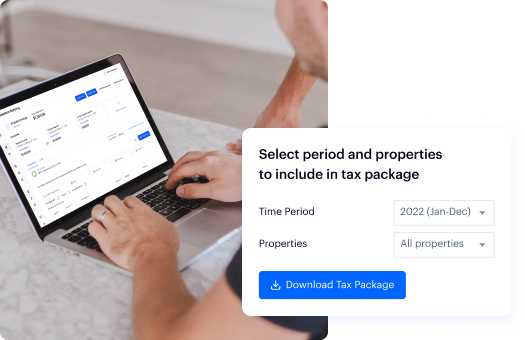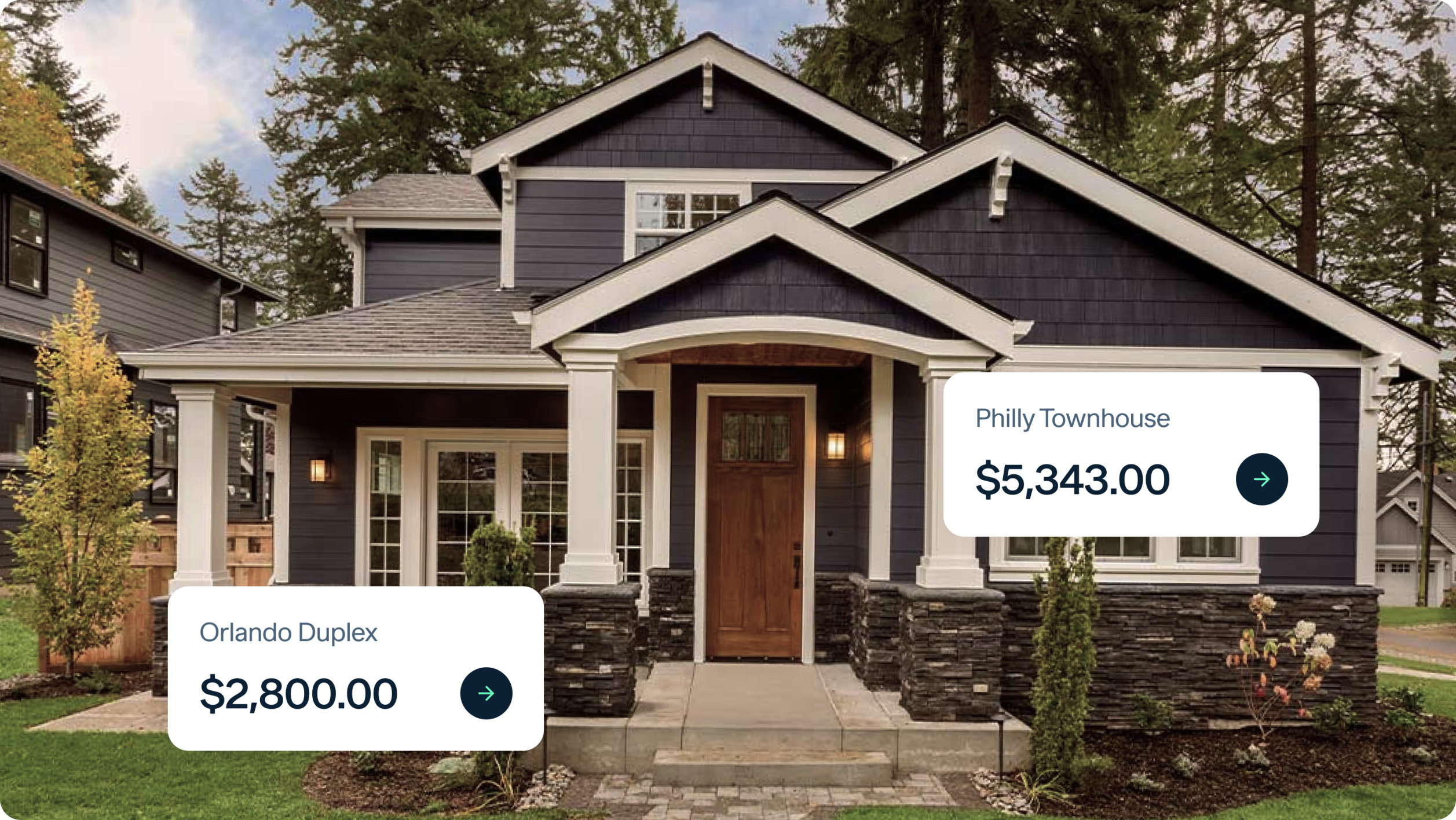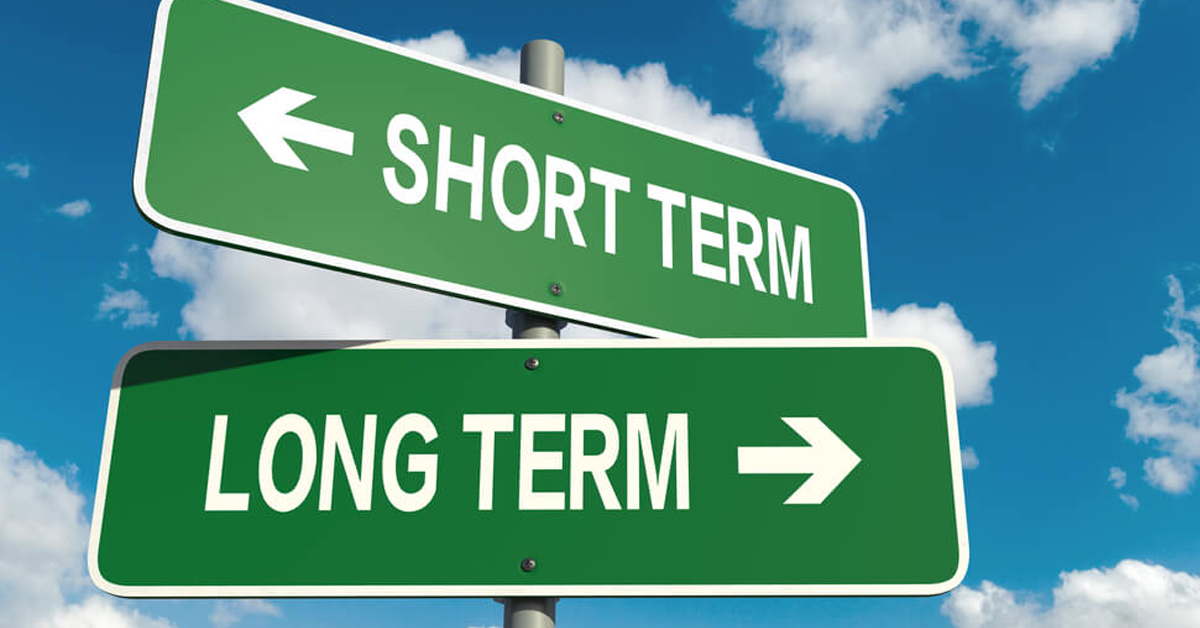Choosing between Airbnb vs renting out long-term has become more challenging as the rental market continues to evolve. Slowing supply growth balanced the short-term rental market in 2024, leading to a 7% year-over-year increase in demand, with 2025 expected to follow a similar trajectory.
The 2025 U.S. short-term rental (STR) market is already showing significant growth, with demand up 7.2% year-over-year and occupancy rising to 43.5% in January, marking its first increase since 2021. At the same time, Airbnb’s extended stays (30+ days) now account for 21% of total bookings, up from 17-18% in 2024, driven by digital nomads and remote work trends. As long-term rent growth cools from recent peaks, prices continue to rise (3.5% year-over-year in January 2025), signaling consistent demand despite inventory surpluses in some regions.
So, is it better to Airbnb or rent properties long-term? This guide compares both strategies and the essential factors influencing overall return on investment (ROI) in the Airbnb vs. long-term rental debate.
Key takeaways
- Airbnb can bring in more money per night, especially in tourist areas, but there may be empty periods between bookings. Long-term rentals offer a steady monthly income with fewer changes.
- Some cities charge extra occupancy taxes for Airbnb on top of state and federal taxes. Long-term rental income taxes are more straightforward and offer more options for tax deductions on property-related expenses.
- Airbnb rentals have stricter rules for licensing and limits on how many nights you can rent the property. Long-term rentals face fewer restrictions, but more tenant protection laws and regulations.
- Running an Airbnb requires more time for frequent cleaning, guest changes, and upkeep, while long-term rentals need less day-to-day involvement once tenants move in.
- Airbnb has higher upfront costs for furniture, cleaning, and fees. Long-term rentals are cheaper to run, and tenants typically furnish units themselves.
- Airbnb lets you change prices and rental periods easily, offering more flexibility than long-term leases with fixed pricing.
What is the difference between Airbnb vs. long-term rentals?
Before we get into the numbers, here’s a brief explanation of short-term rental vs. long-term rentals:
Short-term rentals
A short-term rental (STR) is a property rented out for brief stays through platforms like Airbnb, Vrbo, or Booking.com.
Key characteristics:
- Shorter stays: Typically less than 30 days.
- Furnished and equipped: Properties are usually fully furnished and equipped with essential amenities for a comfortable stay.
- Nightly rates: Hosts have flexibility in setting prices, often charging higher rates compared to long-term rentals.
- Active management: Requires more frequent guest communication, cleaning, and property maintenance.
Long-term renting
A long-term rental is a property leased for an extended period, offering consistent rental income and tenant stability.
Key characteristics:
- Longer lease terms: Six months or more (typically 12-month terms)
- Unfurnished or furnished: Properties can be rented furnished or unfurnished, depending on the agreement.
- Fixed monthly rent: Rent is typically fixed for the lease term, providing predictable income.
- Less active management: Requires less frequent tenant turnover and property management compared to Airbnb.
| Airbnb (short-term rentals) | Long-term rentals |
|---|---|
| Short stays, typically less than 30 days | Fixed leases, usually 6-12 months |
| Daily rates, seasonally adjusted | Monthly rates, consistent for lease term |
| Variable income, higher nightly rates | Steady income, lower monthly rent |
| Higher operating expenses, frequent turnover | Lower operating expenses, less turnover |
| Fluctuating occupancy, seasonal demand | Long-term occupancy, year-round demand |
| Strict local regulations and zoning restrictions | Standard tenancy laws and living standards |
| Complex deductions, quarterly tax filing | Straightforward deductions, annual tax filing |
Airbnb vs. long-term rentals: A financial comparison
Which one is more profitable, Airbnb or long-term rentals? Here’s a financial comparison of both.
Potential earnings
Short-term rentals generally earn higher nightly rates than traditional rentals, but their income can vary due to fluctuating occupancy. Long-term rentals, on the other hand, may have lower rates, but tenants are locked in for extended periods, reducing vacancy and turnover.
Short-term rentals (Airbnb)
- Higher nightly rates: Short-term rentals usually charge higher rates compared to traditional long-term leases. Rates vary depending on location and the size of the property. For instance, an Airbnb in Scottsdale costs around $390 per night compared to $3,000/month ($100 per night) for long-term rentals in the area.
- Premium rates during peak seasons: Hosts can raise prices during high-demand periods. For example, an Airbnb in Kissimmee (one of the most profitable Airbnb locations in Florida) can generate $4,087/month during peak season ($38,000/year), while long-term rentals typically lease for $2,321/month ($27,850/year).
- Variable income stream: Occupancy rates fluctuate, and there’s no guarantee of consistent bookings. Factors like seasonality, local events, and even the weather can impact demand and affect your earnings.
Long-term rentals
- Consistent monthly income: With long-term rentals, landlords benefit from a fixed monthly income since tenants sign leases that typically last six months to a year or more. The average monthly rent in the U.S. is $2,085.
- Predictable cash flow: Since tenants pay their rent on a schedule, landlords can count on steady income coming in every month. This makes budgeting and estimating returns easier compared to short-term rentals.
- Lower vacancy risk: Long-term rentals carry less risk of vacancy because tenants commit to extended stays. The average vacancy rate in the U.S. for long-term rentals is about 6.9%, meaning most properties remain occupied. In contrast, short-term rentals often face gaps between bookings, leading to periods without income.
Here’s a brief overview of average earnings in Airbnb vs renting out long-term. It’s important to note that this is a median rent for all types of apartments and houses.
| City | Airbnb (average daily rent and yearly earnings) | Rentals (median monthly rent and annual average) |
|---|---|---|
| Washington | $150 ($37,000 annually) | $2,400 ($29,000 annually) |
| Los Angeles | $197 ($47,000 annually) | $2,744 ($33,000 annually) |
| Chicago | $140 ($31,000 annually) | $1,995 ($24,000 annually) |
| Dallas | $132 ($29,000 annually) | $1,995 ($24,000 annually) |
| Jacksonville | $173 ($38,328 annually) | $1,645 ($20,000 annually) |
Pricing structure
Short-term rentals pricing can change based on demand, while long-term rentals typically have a fixed monthly rate.
Short-term rentals (Airbnb)
- Nightly rates: Short-term rentals charge nightly rates that vary depending on location and property type. For example, Airbnb rates in Los Angeles average around $274 per night, while a similar property in Venice Beach might go for $367 per night.
- Dynamic pricing: Airbnb hosts use dynamic pricing to adjust rates based on demand. In Scottsdale, RevPAR is around $120 in the off-season (June-August) and upwards of $265 during peak season (February-March).
- Discounts for longer stays: Weekly bookings might get up to a 32% discount, and month-long stays could receive a discount of up to 46%, depending on the location and demand.
Long-term rentals
- Fixed monthly pricing: Long-term rentals have a fixed monthly rent price based on market rates, location, and property size. A two-bedroom unit in New York costs $6,077/month compared to $1,947 for the same property in Houston.
- Annual increases: Rent increases for long-term rentals are usually capped. For instance, in California, rent can only increase by 5% + CPI or 10% (whichever is lower) within a 12-month period. Rent-controlled areas may have even stricter limits.
- Potential rent concessions: Rent concessions might be offered in certain situations to attract tenants or fill vacancies. Common types of rent concessions include discounts on rent, waived deposits, or free amenities. Over 41% of Zillow listings offered rent concessions in February 2025.
Costs involved
Short-term rentals tend to have higher upfront and ongoing costs than long-term rentals. Common Airbnb expenses include furnishing, cleaning, utilities, and regular restocking. Operating costs for short-term rentals can reach around 50% of revenue compared to 35% for long-term rentals.
For short-term rentals, additional costs like property management and booking fees also contribute to higher expenses, while long-term rentals mainly involve routine maintenance, repairs, and property management fees.
Airbnb operating costs:
- Furnishing and decor: $15,000-$25,000 ($50,000+ for larger properties)
- Cleaning services: $50-$200 per turnover
- Utilities: $150-$200 monthly
- Property management fees: 15-25% of revenue (30%-40% for high-demand areas or luxury rentals)
- Platform fees: 3-8% per booking
Long-term rental costs:
- Basic maintenance: 1-2% of the property’s value annually
- Property management fees: 8-12% of monthly rent
- Tenant screening: $30-$50 per application
- Landlord insurance: $800-$1,200 annually
- Turnover costs: $1,000-$5,000 per unit
Tax Implications
The tax treatment of rental income varies significantly between short-term and long-term rentals:
Short-term rental tax considerations
- Subject to occupancy taxes: Many jurisdictions impose occupancy taxes, such as transient occupancy tax (TOT), hotel tax, or sales tax on short-term rentals. For instance, the average daily Airbnb rental in San Francisco is $168 ($39,000 annually), but you have to pay 14% TOT on reservations under 30 nights.
- More complex deduction calculations: The portion of indirect expenses (related to property ownership) you can deduct depends on how much of the property is used solely for rental purposes and how long it’s occupied. Direct expenses (specific to Airbnb operations) are 100% deductible. Read our guide on Airbnb accounting and bookkeeping for a detailed breakdown.
- Potential for higher write-offs: Short-term rental owners can often deduct more expenses due to frequent turnover, resulting in additional cleaning fees, repairs, and restocking supplies in between bookings.
- May require quarterly tax payments: The IRS requires quarterly estimated tax payments (usually on the 15th of the first month of the quarter) for properties earning more than $1,000 in rental income.
Long-term rental tax considerations
- Straightforward income tax reporting: Long-term rental income is generally reported on Schedule E (Supplemental Income and Loss) of the IRS Form 1040. This form simplifies reporting for rental income, as it is not considered self-employment income, and deductions are straightforward.
- Consistent depreciation calculations: Long-term rental properties are depreciated over 27.5 years (residential property), allowing owners to deduct a portion of the property’s value each year. For example, if a property costs $275,000, the annual depreciation deduction would be about $10,000 ($275,000 ÷ 27.5 years).
- Simple deduction tracking: Deductions for long-term rentals tend to be more consistent, such as mortgage interest, property taxes, insurance, repairs, and management fees. There’s generally less fluctuation compared to short-term rentals.
- Annual tax filing is typically sufficient: Long-term rental owners usually file taxes once a year, typically by April 15, and may not need to make quarterly estimated tax payments unless overall income is significant.
Baselane’s landlord accounting automates income and expense tracking for multiple properties and entities under the same login, making it easy to keep all your finances straight for tax season.
Factors to consider before deciding
Here are some key things to think about when deciding between a short-term rental Airbnb vs. rental properties for long-term leases:
Location analysis
Your property’s location plays a crucial role in determining the most profitable rental strategy. Here’s how different locations typically perform:
Tourist destinations
- Higher potential for short-term rental success
- Seasonal demand fluctuations
- Premium pricing during peak seasons
- Greater competition from other vacation rentals
Residential areas
- More suitable for long-term rentals
- Stable tenant pool
- Consistent year-round demand
- Lower marketing requirements
Time commitment
Both types of rentals require hands-on management, but short-term rentals demand daily involvement compared to routine monthly and annual tasks for long-term rentals.
Airbnb daily management tasks
- Guest communication and booking management
- Check-in/check-out coordination
- Cleaning and turnover services
- Maintenance and restocking
- Review management
- Pricing adjustments
Long-term rental periodic responsibilities
- Monthly rent collection
- Quarterly property inspections
- Annual lease renewals
- Occasional maintenance requests
- Tenant screening (during turnover)
- Regular rental property accounting and annual taxes
On average, STR hosts spend 2-3 hours daily booking and managing properties, while LTR landlords spend 2–4 hours per month after securing a tenant.
Rules and regulations
Every city and state has its own regulations, and not following them can lead to fines or even being banned from renting altogether. Let’s break down some key rental rules you should know.
Short-term rental regulations
- Zoning restrictions: Some cities have strict zoning laws that dictate where short-term rentals are allowed. In New York City, you can only rent out a property short-term if you live there too. Meanwhile, Los Angeles has designated zones where vacation rentals are permitted.
- Permits and licenses: Many cities require you to get a permit or business license before listing a property for short-term stays. In San Francisco, you’ll need both to legally rent out a vacation property.
- Maximum stay limits: Some areas restrict how long guests can stay in a short-term rental. For example, in New York City, if the owner doesn’t live on-site, the stay can’t be less than 30 days.
- Occupancy taxes: In many places, short-term rental hosts must collect and pay an occupancy tax, just like hotels do. For example, Miami imposes a 13% tax, while in San Francisco, the rate is 14%.
- HOA and building rules: Even if a city allows short-term rentals, your building or homeowners association (HOA) might not. Some Florida communities have strict HOA rules banning short-term rentals. Always check with your HOA or property management before listing a rental.
- Safety inspections: Many cities mandate safety checks to ensure the property meets fire codes and general safety standards. In Chicago, an inspection is required before a listing goes live.
- Insurance requirements: Many municipalities require hosts to have liability insurance for Airbnb property. Policies typically cost between $2,800 and $3,900 per year.
- Tax registration: Hosts may also need to register for tax purposes. In California, for example, rental hosts must register with the state’s tax authority.
Long-term rental laws
- Landlord-tenant laws: These laws protect both landlords and tenants. In California, landlords can’t evict tenants without a valid reason. Texas has more relaxed laws but still requires written agreements.
- Fair housing regulations: Landlords must follow federal fair housing laws for, prohibiting discrimination based on race, gender, religion, or disability.
- Security deposit limits: Each state has its own rules about security deposit limits. In California, landlords can charge one or two month’s rent, depending on the number of units.
- Maintenance requirements: Landlords are legally required to keep rental properties in good condition. In certain states, tenants can legally withhold rent in escrow until repairs are made.
- Eviction rules: The eviction process varies by state. In New York, evictions can take months and require a court hearing, whereas in Georgia, the process is generally faster but still must go through legal channels. The cost of court eviction can range from $3,500-$10,000, depending on the location and complexity of the case.
Property types
Different property types are better suited for specific rental strategies, impacting both profitability and management efficiency.
Building type analysis
Apartments:
- Often restricted by HOA rules
- Better suited for long-term rentals
- Limited exterior modification options
- Shared amenity considerations
Houses:
- More flexibility in rental strategy
- Greater control over property modifications
- Potential for higher short-term rental rates
- Increased maintenance responsibilities
Furnishing requirements
Furnished rentals (typical for Airbnb):
- Higher initial investment
- Regular replacement and updating needed
- Increased insurance requirements
Unfurnished rentals (common for long-term):
- Minimal upfront costs
- Less maintenance requirements
- Lower insurance costs
Risk assessment
Financial risks
Vacancy and income volatility
- Short-term rentals: 35-45% average vacancy rate.
- Long-term rentals: 5-10% average vacancy rate.
- Seasonal fluctuations: Airbnb rentals are impacted more significantly by seasonality compared to a traditional rental property. For example, St. Petersburg Airbnb occupancy rates have dramatic seasonal swings from peak season in March (84%) to slower periods in October (47%).
- Economic downturns: Short-term rentals may see reduced demand due to decreased travel spending, while long-term rentals might face an increase in tenant defaults as job losses rise.
Payment security
- Airbnb: Uses a pre-payment model, ensuring guests pay in advance, which lowers the risk of missed payments. Additionally, the platform offers host protection for cancellations and disputes.
- Long-term rentals: Rent is usually paid on a monthly basis. However, there is a greater chance of late payments or tenant defaults, sometimes requiring legal intervention.
Property risks
Wear and tear
- Short-term rentals experience more frequent turnover.
- Long-term rentals see steady, predictable wear.
- Furniture replacements every 2-3 years for Airbnb.
- Major updates are needed every 5-7 years for long-term rentals.
Insurance considerations
- Short-term rental insurance: $2,800-$3,900 annually.
- Traditional landlord policy: $800-$1,200 annually.
- Additional coverage is needed for furnished properties.
- Liability protection requirements vary by rental type.
Real-life case studies: Airbnb vs renting out
| Orlando, Florida | Rental Details |
|---|---|
| Average daily rate | $117 |
| Average Airbnb occupancy rate | 63% |
| Average short-term rental costs | 25-40% of total revenue (25% for calculations) |
| Average monthly rent | $2,041 |
| Average long-term rental costs | 8-12% of total revenue (8% for calculations) |
| Average housing price in Orlando | $378,740 ($380,000 for calculations) |
Here are the calculations based on the above-mentioned data:
Projected annual gross income
Short-term Rental (STR) income calculation
- Daily Airbnb Rate = $117
- Occupancy Rate = 63%
- Annual Days Rented = 365 × 63% = 229.95 days
Annual Gross Income from STR = 229.05 × $117 = $26,904
Long-term rental (LTR) income calculation
Monthly Rent = $2,042
Annual Gross Income from LTR = $2,212 × 12 = $24,504
Operating costs
Short-term rental (STR) costs
- STR Operating Cost Percentage = 25%
- Annual STR Operating Cost = 25% × $26,904 = $6,457
STR Net Operating Income = $26,904 – $6,457 = $20,447
Long-term rental (LTR) costs
- LTR Operating Cost Percentage = 8%
- Annual LTR Operating Cost = 8% × $24,504 = $1,960
LTR Net Operating Income = $24,504 – $1,960 = $22,544
ROI calculation
ROI = NOI / Cost of Investment
- Short-Term Rental ROI: 5.4% ($20,447 / $380,000)
- Long-Term Rental ROI: 5.9% ($22,544 / $380,000)
In this scenario, long-term renting slightly outperforms short-term rentals in terms of return on investment—5.9% vs. 5.4%. However, STR income can reach over $3,000 per month during peak seasons, offering the potential for higher returns.
Pros and cons of Airbnb vs renting out
Pros of Airbnb (short-term rentals)
- Higher potential income: Short-term rentals can generate higher daily rates compared to long-term leases.
- Flexibility for owners: Owners can block off dates for personal use.
- Diverse guest demographics: Ability to host travelers, vacationers, and business professionals.
- Dynamic pricing options: Adjust rental rates based on demand (e.g., holidays, local events).
- Control over property: Easier to inspect property regularly between guest stays.
- Potential tax benefits: Deduct expenses like cleaning, utilities, and advertising.
- Global audience reach: Access to millions of potential guests via Airbnb’s platform.
- Customization opportunities: Tailor guest experiences for better reviews and higher returns.
- Less risk of non-payment: Payment is processed before guests arrive.
- No long-term commitments: Avoid being locked into tenant leases.
- Ability to try different markets: Easier to experiment with location-specific pricing.
- Improved property upkeep: Frequent cleaning and maintenance due to guest turnover.
- Higher occupancy potential in tourist areas: Especially in high-demand locations.
- Increased property value: Well-maintained properties can appreciate more.
- Support for short-term guests: Cater to unique groups like wedding parties or conference attendees.
Cons of Airbnb (short-term rentals)
- Higher management demands: Frequent bookings require more effort and time.
- Seasonal income fluctuations: Revenue depends on tourist seasons and demand cycles.
- Increased operating costs: Regular cleaning, utilities, and supplies.
- Local regulatory challenges: Some cities impose strict Airbnb laws or bans.
- Neighborhood disputes: Complaints from neighbors about noise or frequent visitors.
- Platform fees: Airbnb charges fees for both hosts and guests.
- Inconsistent occupancy rates: Risk of empty periods with no guests.
- Marketing and listing efforts: Professional photography and detailed descriptions are needed.
- Increased wear and tear: More frequent property use leads to faster depreciation.
- Safety concerns: Potential for guests to damage property or violate rules.
- Competition: Saturation in popular areas can lower earnings.
- Higher management costs: hiring a management company can be very expensive If you don’t know how to manage a vacation rental property.
- Taxes on short-term rentals: Occupancy or tourism taxes in some regions.
- Legal and licensing costs: Compliance with local laws can be expensive.
- Short-term mindset of guests: Less care for the property compared to long-term tenants.
- Dependence on reviews: Negative reviews can significantly impact bookings.
Pros of long-term rentals
- Stable income: Monthly rental payments provide predictable cash flow.
- Less management time: Fewer tenant turnovers reduce management needs.
- Lower operating costs: Tenants often pay for utilities and upkeep.
- Legal protection: Clear lease agreements establish rights and responsibilities.
- No seasonal dependence: Income remains steady regardless of tourist seasons.
- Attract reliable tenants: Screening processes help secure responsible renters.
- Easier to budget: Fixed income helps in financial planning.
- Lower marketing efforts: No need for constant advertising after finding a tenant.
- Tenant responsibility: Long-term tenants are more likely to care for the property.
- Consistent occupancy: Properties remain rented for longer periods.
- Fewer administrative tasks: No need to manage frequent bookings or guest interactions.
- Legal support available: Clear laws regulate landlord-tenant relationships.
- Attracts families or professionals: Long-term stability is ideal for these groups.
- Less risk of property damage: Tenants are invested in maintaining their homes.
- Reduced regulatory burden: Fewer local restrictions compared to Airbnb.
Cons of long-term rentals
- Locked-in lease Agreements: Hard to adjust terms mid-lease.
- Potential for problematic tenants: Evictions can be costly and time-consuming.
- Limited flexibility: Owners can’t use the property for personal purposes.
- Lower income potential: Less lucrative in high-demand, short-term rental markets.
- Maintenance challenges: Delayed reporting of issues by tenants.
- Vacancy risks: Potential income loss during tenant turnover periods.
- Legal disputes: Issues like non-payment or damages can lead to lawsuits.
- Limited market control: Fixed rent for the lease duration despite market changes.
- No dynamic pricing: Rent doesn’t adjust to high-demand periods.
- Tenant screening costs: Finding reliable tenants can be expensive.
- Depreciation over time: Normal wear and tear accumulated over the years.
- Landlord liability: Responsible for major repairs and emergencies.
- Lack of marketing opportunities: Long-term leases don’t allow for frequent changes.
- Tenant dependence: A single bad tenant can disrupt the system.
Making your decision
Consider these key questions when choosing your rental strategy:
Financial goals
- Are you prioritizing immediate cash flow or long-term stability?
- Can you handle income fluctuations?
- What’s your risk tolerance?
Time availability
- Can you manage daily guest interactions?
- Are you willing to hire property management?
- How hands-on do you want to be?
Property location
- Is your area tourist-friendly?
- What are the local regulations?
- How strong is the long-term rental market?
Bottom line
Whether you choose Airbnb or traditional renting, success comes down to how well you manage your finances. From tracking expenses and maximizing deductions to staying organized across multiple properties, accurate accounting is essential for optimizing ROI.
That’s where Baselane can help. Baselane’s AI-powered bookkeeping and integrated banking are designed specifically for landlords and real estate investors. Easily separate each property’s finances with unlimited banking accounts, add them as payout methods on vacation rental platforms (Airbnb, Vrbo, booking.com, etc.), and sync your external accounts and cards in one place where all your transactions are auto-tagged by property and expense category to take the guesswork and time out of tax season.
Ready to put your short-term rental finances on autopilot? Sign up for free today.
FAQs
Deciding between Airbnb or long-term rentals depends on your goals and how hands-on you want to be. Airbnb offers higher income potential, especially in high-demand markets, but comes with higher costs, more time commitment, and regulatory risks. Long-term rentals provide steady income, lower expenses, and easier management, but typically earn less overall.
If you're looking for flexibility and can manage guest turnover or automate tasks, Airbnb may deliver stronger returns. If you prefer passive income and less involvement, long-term renting is likely the better fit. Some investors even combine both strategies to maximize seasonal income while maintaining stability.
Renting out your home on Airbnb can be profitable, but several factors affect earnings. These include your property type and location, seasonality, local demand, pricing strategy, and operating costs. High-demand periods like holidays can boost profits.
As a host, you must manage guest communication, maintain cleanliness, and handle any issues or complaints. There are risks, too, such as property damage, disruptive guests, or illegal activities. Be prepared for both the work and the risks involved in hosting.
Profitability depends on factors like location, demand, property type, and operational costs. For example, Airbnb tends to be more profitable in tourist-heavy cities like Orlando or San Francisco, where visitors seek short-term stays at higher nightly rates.
On the other hand, long-term renting (LTR) may be more profitable in suburban or rural areas with stable tenant demand, such as college towns or family-oriented neighborhoods, where short-term vacation demand is low.
Whether you should rent or Airbnb your house depends on your financial goals, location, time commitment, and risk tolerance:
- Choose Airbnb if your home is in a tourist-friendly area with high demand, you’re comfortable managing guests or using automation tools, and you want to maximize income.
- Choose long-term renting if you want predictable income, fewer responsibilities, and lower turnover. It’s typically easier to manage, with operating costs around 8% compared to 25%+ for short-term rentals.
Ultimately, if you value higher income potential and flexibility, go with Airbnb. If you want stability and less hassle, long-term renting is a better fit.
Airbnb vs mid-term rentals provides a good option for property owners who want better earnings without locking into long-term leases.
Renting out your property for 30–90 days can bring in higher income than regular short-term vacation rentals while offering more stability. This setup works well for people on business trips, moving, or temporary workers.
Airbnb is usually associated with short-term rentals, but landlords can also use Airbnb for long-term rentals. A "long-term Airbnb" involves renting out a property on Airbnb for a month or more. It offers more stability than short-term rentals but less flexibility than traditional rentals.
Consider long-term Airbnb vs. renting long-term if your market has strong mid to long-term demand (think: cities with hospitals, universities, remote-friendly jobs, or seasonal workers). You’ll benefit most if your property is already furnished and you want consistent income with less hassle than managing frequent turnovers.









